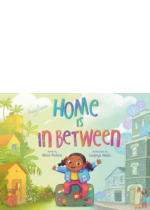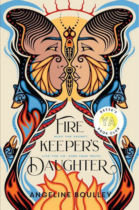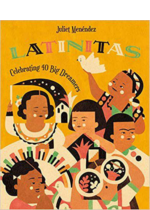Excitement spreads like wildfire through the jungle. Earth-goddesses are planning a conference! From Australia to Antarctica, Amazon to Africa, goddesses will debate the burning environmental issues of our times . . . and bushy-tailed, smooth-talking Coyote wants in on the action. Can this infamous trickster come up with a plan to infiltrate the conference and leave a lasting legacy for our planet? A rip-roaring poem about protecting our environment.
Author: Book Importer
Bloom
There was once a beautiful flower and a little girl who loved it. She talked to it every morning on her way to school. The owner of the flower shouted at her. The next day, the flower did not open. The angry man didn’t understand. He tried watering it. He tried giving it shade and he tried talking to it. He told it how wonderful he was, how important his job was and how lonely he felt. But it still refused to open. So, he asked the little girl. Why don’t you tell it how wonderful it is and how much you love it? she said. As he did so, his own heart filled with love. And the flower bloomed.
Home Is In Between

Shanti misses the warm monsoon rains in India. Now in America, she watches fall leaves fly past her feet. Still, her family’s apartment feels like a village: Mama cooking luchi, funny stories in Bangla, and Baba’s big laugh. But outside, everything is different – trick-or-treating, ballet class, and English books. Back and forth, Shanti trudges between her two worlds. She remembers her village and learns her new town. She watches Bollywood movies at home and Hollywood movies with her friends. She is Indian. She is also American. How should she define home
Grandfather Bowhead, Tell Me A Story
Bowhead whales are the longest-living mammals on the planet, living over 200 years. In this heartwarming story, a grandfather bowhead recounts to his young grandchild calf all the beautiful, amazing, and surprising things he has seen in his lifetime, all while assuring the little calf that there is nothing more wondrous than the love a grandfather has for his grandchild.
Firekeeper’s Daughter

Eighteen-year-old Daunis Fontaine has never quite fit in, both in her hometown and on the nearby Ojibwe reservation. She dreams of a fresh start at college, but when family tragedy strikes, Daunis puts her future on hold to look after her fragile mother. The only bright spot is meeting Jamie, the charming new recruit on her brother Levi’s hockey team.
This book is the WOW Recommends book of the month for July 2021.
Firekeeper’s Daughter is also featured in WOW Review Volume XIV, Issue 1.
I Am Loved
Pakak is in a new foster home, with new people, new food, and new smells. Feeling alone and uncertain, Pakak finds comfort in a secret shared with him by his anaanattiaq, his grandmother, and in the knowledge that he is loved no matter how far away his family may be. Written as a gift for Inuit children in care by foster parents Kevin and Mary Qamaniq-Mason, this book is lovingly imbued with cultural familiarities that will resonate with children who, like Pakak, are navigating the unknown.
Latinitas:Celebrating 40 Big Dreamers

Discover how 40 influential Latinas became the women we celebrate today! In this collection of short biographies from all over Latin America and across the United States, Juliet Menéndez explores the first small steps that set the Latinitas off on their journeys. With gorgeous, hand-painted illustrations, Menéndez shines a spotlight on the power of childhood dreams.
Napoleon Vs. The Bunnies
The renowned Napoleon Bonaparte faces an army of a different sort in this witty, unconventional telling of a true event in his life. Everyone knows the Battle of Waterloo was Napoleon Bonaparte’s most crushing defeat, right? Well, some beg to differ. It seems there was another less famous (though perhaps more humiliating) surrender in his past. Let’s call it Bunnyloo. In 1807, Napoleon had ordered his chief of staff to round up rabbits for a celebratory hunt, only, he collected domesticated rabbits, not wild ones. So, when the rabbits were released to begin the hunt, they didn’t run away. Instead, they ran straight at Napoleon and his hunting party. Now, some might think Napoleon — king overthrower, army commander, territory conqueror — would only laugh at an advancing battalion of cute, fluffy bunnies. Think again!
Walking For Water: How One Boy Stood Up For Gender Equality
In this inspiring story of individual activism, a boy recognizes gender inequality when his sister must stop attending school — and decides to do something about it.Victor is very close to his twin sister, Linesi. But now that they have turned eight years old, she no longer goes to school with him. Instead, Linesi, like the other older girls in their community, walks to the river to get water five times a day, to give their mother more time for farming. Victor knows this is the way it has always been. But he has begun learning about equality at school, and his teacher has asked the class to consider whether boys and girls are treated equally. Though he never thought about it before, Victor realizes they’re not. And it’s not fair to his sister. So Victor comes up with a plan to help.
Spin a Scarf of Sunshine
‘On a gentle slope in rolling hills stood a little house of wood and stone. There were hens and bees and apple trees, bright flowers and soft green grass. And Nari had a little lamb of her very own.’
As the seasons change, Nari and her parents shear her sheep’s fleece, and spin and dye the wool. Nari knits the yarn into a cosy yellow scarf. But as Nari grows older, her beloved scarf becomes tattered. It’s time to recycle the wool into compost, with a little help from the worms. This charming picture book will help children understand where clothing comes from, and is a joyful celebration of traditional crafts and sustainable living. The luminous illustrations are full of character, texture and seasonal detail.
